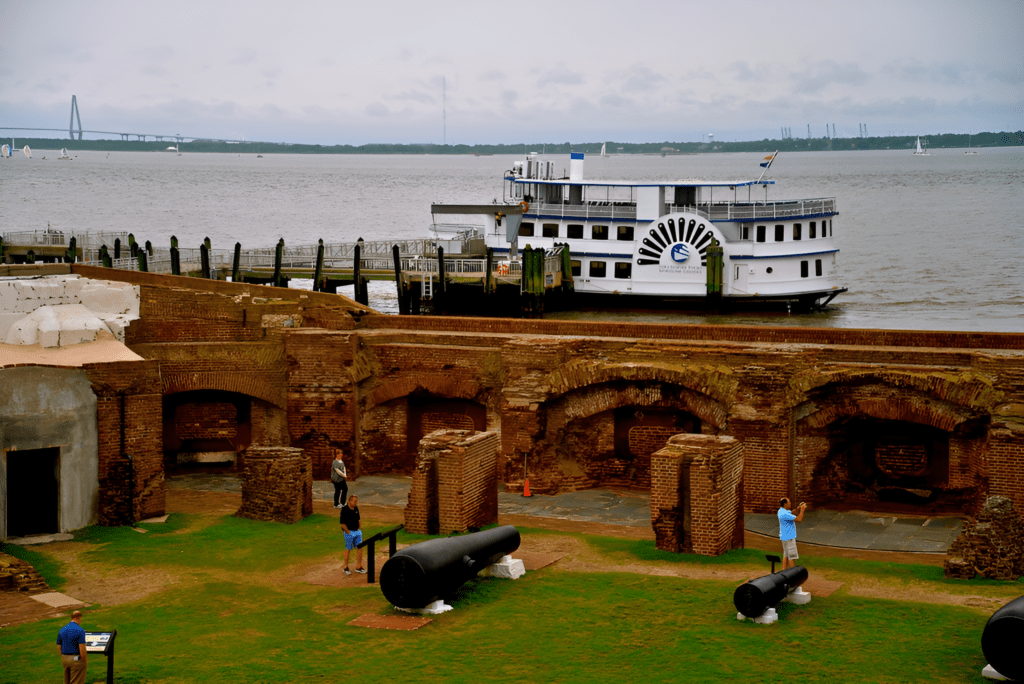Fort Sumter, located in Charleston Harbor, South Carolina, holds a significant place in American history. This is where the American Civil War began, with the first shots fired on April 12, 1861. But it signaled four bloody years of war. The fort represented Union determination and Confederate resistance. It is considered to be of great strategic value, and it was also the location where a battle occurred that has kept its place historically in U.S. history.
The Building of Fort Sumter
Fort Sumter, constructed in 1829 after the War of 1812, was built after the South about-faced. The U.S. government recognized the importance of protecting coastal cities. Fort Sumter was designed to be a component of a much larger coastal defense strategy and was located on an artificial island in the middle of Charleston Harbor. Named after Revolutionary War hero Gen. Thomas Sumter, the fort was still unfinished when North-South tensions began simmering in the 1850s.
Tension Gets Higher, Secession
The result was the late 1850s, with sectional tensions over slavery at a boiling point. When Abraham Lincoln won the November election in 1860, Southern states not only dreaded that their way of life — including human bondage itself — was imperiled. South Carolina seceded on December 20, 1860- the first state to do so. The rest of the Southern states followed, and in February 1861, the Confederacy was created with Jefferson Davis as its president. This brewing conflict came to a head when Confederate artillery batteries opened fire on the Union-held Fort Sumter under Major Robert Anderson.
The Siege of Fort Sumter
Following South Carolina’s secession, the Confederate forces in Charleston asked for Fort Sumter to be surrendered. When Major Anderson rejected the demand, the Union sought to reinforce its fort. The Confederates saw this as an act of hostility. Confederate General P.G.T. Beauregard ordered the bombardment of Fort Sumter on April 12, 1861. Confederate artillery shelled the fort for 34 hours, destroying it. Outnumbered and low on supplies, the Union forces had no option other than to capitulate on April 13.
Consequences and Impact on the Civil War
During the war, an attack on Fort Sumter kept it in Confederate possession. Union forces tried to regain it but to no avail. It was blockaded and bombarded by the Union forces, sustaining heavy damage. Southern forces, though, held it until February 1865, when Union troops managed to recapture the fort just as warm weather allowed naval activities. However, by then, the fort was virtually destroyed after years of heavy mortar fire.
Fort Sumter Civil War-era
Throughout much of the ensuing war, Fort Sumter remained in Confederate hands. The Union made several attempts to take back that fort. However, they failed. The fort was damaged heavily by Union blockades and bombardments. Rebel forces, for the most part, but it wasn’t until February 1865 when Union troops finally recaptured them just a couple of months before Lee would surrender. When we arrived, the fort was destroyed mainly: it had been bombarded for years on end.
The symbolism of Fort Sumter
During the war, Fort Sumter was a powerful emblem of Northern and Southern discord. The peculiar institution was expected to serve the living as well, and for those on the Confederate’s side — a reminder of their rebellion against Union rule. The fort became a symbol of maintaining the USA as one nation for the Union. The Battle at Fort Sumter would become the seminal event of a broader, more deadly, and sustained struggle over slavery and states’ rights that would play out during the four severe years to come.
Restoration and Legacy
Fort Sumter was mainly demolished after the Civil War. In the late 19th and early 20th centuries, efforts were made to restore it, though it has since faded. The place became a National Monument in 1948, thereby safeguarding it as a historical site. Visitors can now go ashore and explore Fort Sumter’s role in American history through guided tours and displays. The site stands as a testament to the ravages of the Civil War and, more importantly, the recovery from it.

